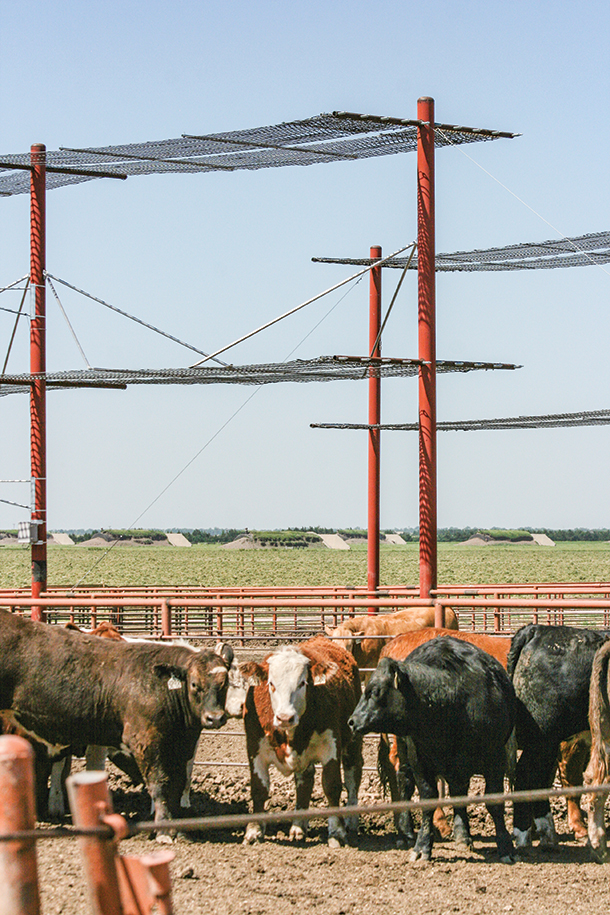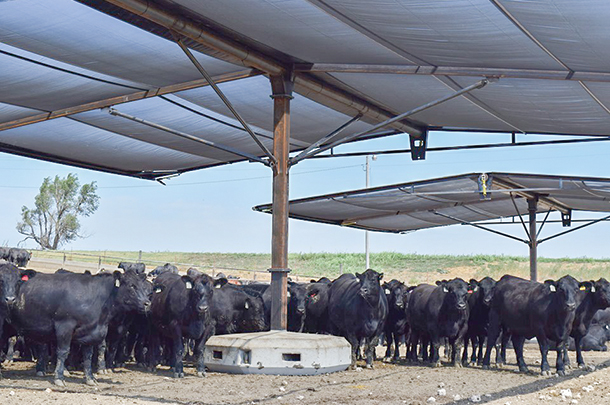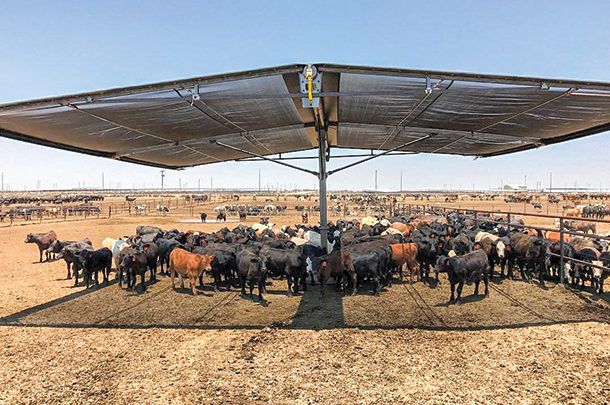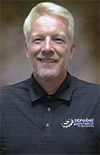It seems shade for cattle just has to be a good idea – it only stands to reason an animal that is more comfortable will eat better and will see a better rate of gain. Having shade available when the daytime temperatures start to rise and remain high overnight with increased humidity levels is becoming very popular for cattle producers, especially early in the season when cattle experience temperatures in the 80s and 90s for the first time. And dealing with those newly arrived cattle at the feedyard or those with some sort of compromised health is a universal concern for producers. Having shade in sick pens is now becoming very common.
What are the options?
Sprinkling cattle with water has been a strategy used for years, but not without a downside. The cost of water and a watering system can be significant, and many producers feel the animals get “addicted” to the topical application of water, which requires that it continues long-term throughout the season. There is some research to suggest the water magnifies the intensity of the heat as well, especially on dark-skinned cattle. And adding moisture to an already wet pen presents additional difficult challenges for feedlot maintenance.
Then there is no doubt to the national awareness and trend toward animal husbandry, animal welfare and animal comfort. Producers want to take care of their animals and also maximize their gains.
So where does shade fit in the discussion? And is there evidence to show that shade can increase rate of gain and even increase the overall health of the herd?
 Cattle at the U.S. Meat and Animal Research Center feed under shade stands installed to test performance in hot weather. Photo by David Cooper.
Cattle at the U.S. Meat and Animal Research Center feed under shade stands installed to test performance in hot weather. Photo by David Cooper.A number of studies have been conducted in recent years to evaluate the negative impact of heat stress during the summer months on the productivity and well-being of feedlot cattle. Increasing discussion has also increased about providing shade as a mitigation strategy. In general, the informal and formal results of these studies have shown an improvement in daily gain and carcass quality, decreased respiration rate and altered behavior.
Kansas State University’s Beef Stocker Unit is now teaming up with Strobel Manufacturing and NCBA to measure the effect of shade and diet composition during heat stress events on water intake and behavior patterns of beef stocker calves during the summer months.
Dale Blasi, professor and extension beef specialist at KSU, wants to know what the science says, as do hundreds of producers around the country.
“We are looking forward to doing an extensive study over the next 24 months,” says Blasi. “We will use shades and a lot of diligent science to measure the effectiveness of utilizing pen shade during heat stress – especially in the hot and humid months of June, July and August.”
“We are excited about this research process beginning this spring,” says A.J. Tarpoff, assistant professor at KSU, beef extension veterinarian, who is leading the research project. “To our knowledge, no published studies that assess the effects of shading on performance and health of newly arrived stocker heifers have been completed. We will closely monitor weight, diet, water intake, panting and corresponding health results. We will use active transponders to measure activity and rumination patterns along with panting scores to objectively measure heat stress.”
Many producers around the country are already convinced. Dale Moore from Cattleman’s Choice Feedyard in Gage, Oklahoma, cares for 10,000 head of cattle year-round. He admits that he struggled with the decision, and his daughter Jillian convinced him.
“Sometimes in this industry we can bury our heads in the sand and ignore some things that can make a big difference in our operation,” says Moore, owner/president of CCFI. “Jill has had a passion for animals since she was really young. And when she came home from college she was convinced that shade could provide a huge benefit to our operation. She started researching, and it wasn’t long before many of our cattle were under shade.”
 Cattlemen’s Choice Feedyard Inc. of Gage, Oklahoma. Photo courtesy of CCFI.
Cattlemen’s Choice Feedyard Inc. of Gage, Oklahoma. Photo courtesy of CCFI.Dale has 40 shades on-site and says the results were immediate and significant.
“You hate to admit to your kids they’re right – but sometimes you have to,” Dale adds with a laugh. “Our heifers tend to average 50 percent Prime. Now we are seeing 60 percent with shade.”
“It only took 20 years and my daughter in the office flooding me with research,” he tacks on. “It’s amazing now that I see it … one of the best investments we’ve ever made. I wish I could have done it years ago.”
Cattleman’s Choice Feedyard is planning to continue expanding their shade coverage to meet the need.
Bill Albrecht in De Smet, South Dakota, has been adding shade to his operation for a number of years. He explains the shade strategy he is using.
“Our largest pens are 200 head, and I have two shades in those. The 100-head pens get one shade. Feed consumption and water intake both went up when I added shade. It was interesting to watch 1,400-pound cattle move from the shades to feed to water then back to the shades. With water sprinklers, they just stand under the water. They don’t eat or drink.”
He’s convinced that shade makes a significant difference – not only in rate of gain, but in the overall well-being of the herd.
See a full cattle shade video, ground temperature tests and more on cattle heat stress mitigation when you go to YouTube or Strobel Manufacturing Inc.






